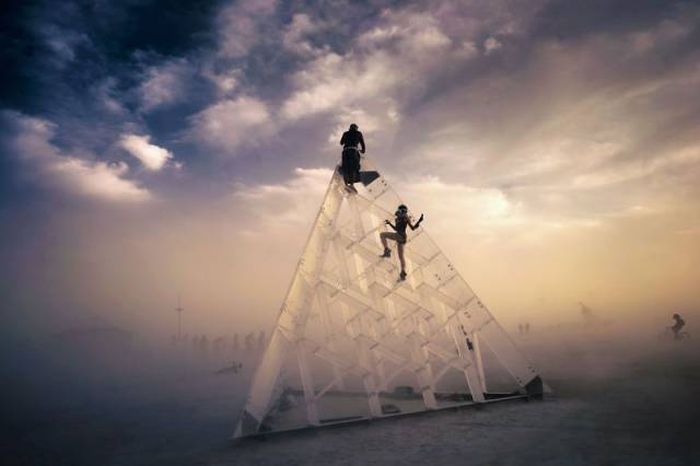|
|
Burning Man 2016, Black Rock Desert, Nevada, United States
|
In an attempt to offset some of the event's carbon footprint, 30- and 50-kilowatt solar arrays were constructed in 2007 as permanent artifacts, providing an estimated annual carbon offset of 559 tons.
On-site photography restrictions
Despite presenting itself as an event promoting self-expression, the terms of the Burning Man ticket require that participants wishing to use video-recording equipment (including, in practice, most digital cameras) sign over copyright in their images to Black Rock City, and forbid them from using their images for anything other than personal and private use. This has been criticized by many, including the Electronic Frontier Foundation.
A Burning Man spokeswoman replied that the policies are not new, were written by a former head of the EFF, were used when suing to block pornographic videos and ultimately arose from participant concerns: "We’re proud that Black Rock City (a private event held on public land) is widely acknowledged as a bastion of creative freedom. But that protection of participants' freedoms does necessitate the acceptance of some general terms of engagement when it comes to cameras... EFF seems to think that anyone attending any event somehow has an absolute right to take photographs, and then to do whatever they want with those images without any effective restriction or manner of enforcement. While we believe that such rights do make sense for any of us taking pictures in purely public spaces, this is not true in the private space of Burning Man — if it were it would mean that Burning Man couldn’t protect participant privacy or prevent commercialization of imagery."
|
|









